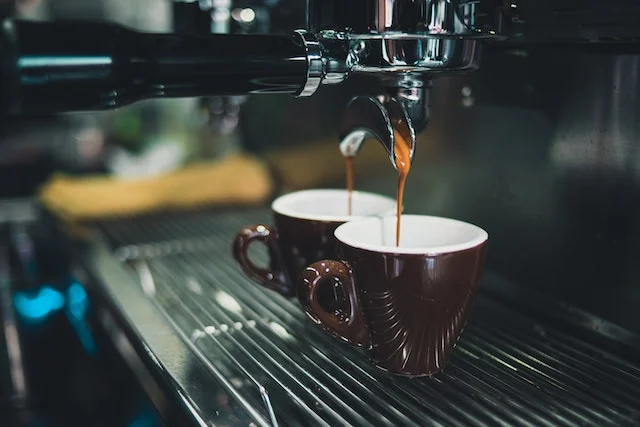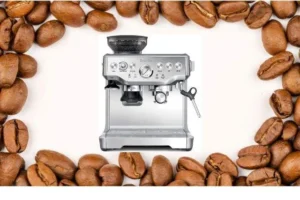Latte vs Flat White: Unpacking the Differences
For many coffee lovers, a latte and a flat white may seem almost interchangeable – both are made with espresso and steamed milk, after all. But while these two drinks share some similarities, there are key differences that set them apart. In this guide, we’ll explore the unique characteristics of lattes vs flat whites to help you understand which one might be the perfect fit for your taste buds.
Key Takeaways
- A latte and a flat white may seem similar, but they have distinct differences in taste, preparation, and origin.
- The milk to espresso ratios in each drink affects their flavor and texture, with lattes featuring more milk and a creamier texture, while flat whites have a stronger, more espresso-forward taste.
- The art of crafting silky microfoam plays a big role in latte preparation, while flat whites traditionally have a thinner layer of foam.
- Both drinks have unique cultural and regional variations that have influenced their development over time.
- When deciding between a latte and a flat white, consider factors such as serving size and caffeine content to make the best choice for your taste and needs.
Taste: A World of Contrasts
When it comes to taste, the differences between a latte and a flat white are distinct. While both drinks contain espresso and milk, the ratios used in each preparation result in contrasting flavor profiles.
A latte typically has a higher milk ratio to espressoo, resulting in a creamier and sweeter taste. The milk also creates a smooth and silky texture that complements the boldness of the espresso. In contrast, a flat white has a higher ratio of espresso to milk, resulting in a more robust and full-bodied taste. The milk used in a flat white is also less foamy and more velvety, providing a smoother mouthfeel.
The taste experience of both drinks is also influenced by the type of milk used. Many cafes use whole milk in a latte, which imparts a richness to the drink. On the other hand, a flat white is often made with a lighter milk, such as skim or almond milk. This enhances the natural flavors of the espresso and creates a distinct taste experience.
The Nuances of Texture and Mouthfeel
In addition to taste, the texture and mouthfeel of a latte and a flat white also differ significantly. A latte’s frothy milk creates a thick layer of microfoam on top, which contrasts with the creaminess of the milk below. This unique texture adds to the overall experience of the drink and is often used to create intricate latte art.
A flat white, on the other hand, has a more uniform and velvety texture. This is due to the lack of foam in the milk, which creates a smoother and more consistent texture throughout the drink. The velvety texture also allows the espresso to shine through, creating a bolder taste experience.
Ultimately, the taste, texture, and mouthfeel of a latte and a flat white are subjective and dependent on personal preference. Some may prefer the creaminess and sweetness of a latte, while others may prefer the boldness and richness of a flat white. Whatever your preference, both drinks offer a unique coffee experience that is worth savoring.

Preparation: Crafted with Care
One of the key differences between a latte and a flat white is the milk to espresso ratio used in their preparation. A latte typically has a higher ratio of milk to espresso compared to a flat white, resulting in a creamier and sweeter taste. On the other hand, a flat white has a higher ratio of espresso to milk, leading to a stronger flavor with a velvety texture.
In terms of foam, both drinks feature microfoam, which is created by aerating milk with steam. However, the foam in a latte tends to be thicker and more abundant, often used to create latte art designs on the surface. In contrast, a flat white has a thinner and more velvety foam that blends seamlessly into the drink.
Baristas take great care in crafting these beverages to ensure that the milk and espresso are perfectly balanced. The milk is heated to a specific temperature and steamed to achieve the desired texture and consistency. The espresso is then pulled and added to the milk, resulting in the unique flavors and textures that distinguish a latte from a flat white.
Origins: Tracing the Roots
Both the latte and the flat white have a rich history that stretches back a long way, with differing accounts of their origins depending on where you look.
The latte, which is short for “caffè latte” (meaning “milk coffee” in Italian), is said to have originated in Italy in the 17th century, where it was first served as a breakfast drink. It quickly gained popularity across Europe as a creamy and indulgent coffee option.
The flat white, on the other hand, has a more contested origin story. While it’s often associated with Australia and New Zealand, some sources claim that it was first served in the UK in the 1980s. Regardless of its exact origin, the flat white is a staple in many coffee shops around the world and is appreciated for its simplicity and elegance.
Despite their different origins and cultural significance, the latte and the flat white have both become beloved coffee classics, attracting fans from across the globe with their unique flavors and textures.

Conclusion
While both the latte and the flat white are popular coffee drinks enjoyed by enthusiasts worldwide, there are some notable differences between them.
Size Matters
One of the most apparent differences is the serving size. A typical latte is larger than a flat white, with a volume ranging from 12-20 ounces. On the other hand, a flat white is generally served in an 8-ounce cup. If you need a boost of caffeine, a latte may be the way to go.
Caffeine Content
Speaking of caffeine content, a latte generally contains more caffeine than a flat white. A latte is typically made with two shots of espresso, while a flat white usually has only one. So, if you’re looking for a quick pick-me-up, the latte may be the better option.
Ultimately, whether you prefer a latte or a flat white comes down to your personal taste and preferences. The latte is creamier, milder, and larger, while the flat white has a more velvety texture and stronger flavor. Try both and see which one you like best – you may find that you have a new favorite coffee drink!
FAQ
A: A latte is made with a higher ratio of milk to espresso compared to a flat white. This gives the latte a creamier and more mellow taste. On the other hand, a flat white has a stronger coffee flavor as it uses less milk and more espresso.
A: The taste of a latte is characterized by its smooth and creamy texture, with the milk providing a subtle sweetness that balances the espresso. In contrast, a flat white has a bolder and more robust coffee flavor, with the milk enhancing the richness of the espresso without overpowering it.
A: A latte is typically made with a 1:3 ratio of espresso to milk, meaning there is more milk than espresso. On the other hand, a flat white has a higher concentration of espresso with a 1:1 or 1:2 ratio of espresso to milk.
A: In a latte, the foam is usually more abundant and lighter, creating a layer of delicate microfoam that can be used for latte art. In a flat white, the foam is denser and silkier, providing a smooth and velvety texture to the drink.
A: The latte originated in Italy and gained popularity throughout Europe. It was traditionally served in a large cup to be enjoyed slowly. The flat white, on the other hand, has its roots in Australia and New Zealand, where it was created as a smaller, more concentrated alternative to the latte.
A: A latte is typically served in a larger cup, ranging from 8 to 16 ounces, depending on the café and region. A flat white, on the other hand, is usually served in a smaller cup, ranging from 5 to 8 ounces. However, serving sizes can vary, so it’s always best to check with the specific café.
A: The caffeine content in a latte and a flat white can be similar, as it depends on the number of shots of espresso used. However, since a flat white has a higher concentration of espresso, it may have a slightly higher caffeine content compared to a latte of the same size.









Interesting article. The choice comes down to your preference: latte for creaminess, flat white for a stronger coffee kick.